Life jackets: Swim, breathe, wait - 24 automatic life jackets in a big comparison test
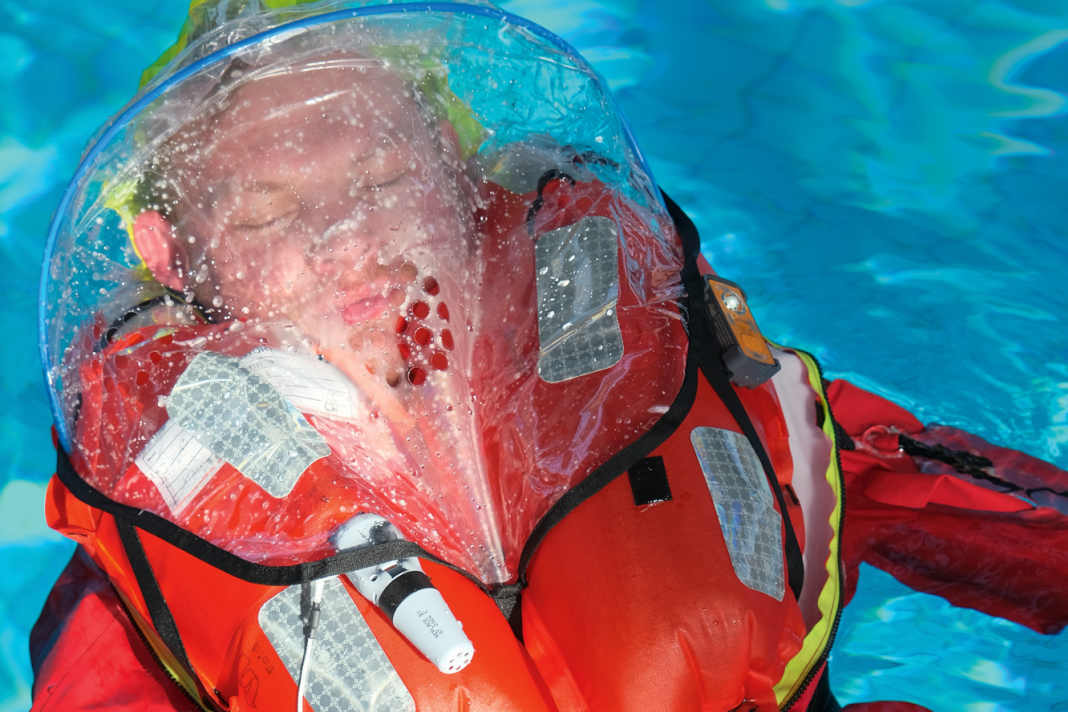





All content in this security special:
- Sea survival training for emergencies
- Stretch ropes: The correct handling of lifelines
- Lifejackets: 24 automatic lifejackets in a large comparison test (150N & 275N)
- Emergency transmitters - alerting, searching and finding, a system overview
- You should master these MOB manoeuvres!
- Back on board with tricks and professional recovery aids
- Safety check: Inspection saves lives
- Prepared for an emergency: 6 checklists for 6 scenarios
Every sailor has one, usually it is given little attention after intensive study before purchase and occasional maintenance, ideally it is worn frequently: the lifejacket must work in an emergency, inflate automatically and then keep the head of the person overboard above water.
There is a wide choice of equipment suppliers, so what is the right choice? According to the EN ISO 12402 standard, there are buoyancy classes of 150 and 275 newtons for sea areas. The values indicate the respective minimum buoyancy. A lifejacket in the 150 category can therefore have far more buoyancy, which is already advertised in the product name of many models. However, there is one problem: the standard does not stipulate that lifejackets with a buoyancy of 150 newtons must be worn with oilskins. Only for the 275 Newton class does it say: "High seas under extreme conditions and in combination with clothing in which air can accumulate." Although oilskins are supposed to be waterproof, this property is a hindrance in MOB situations, as the air cannot escape quickly from the garments. However, these air pockets in the jacket and trousers change a person's buoyancy considerably and may counteract the buoyancy of the lifejacket.
This is how we tested
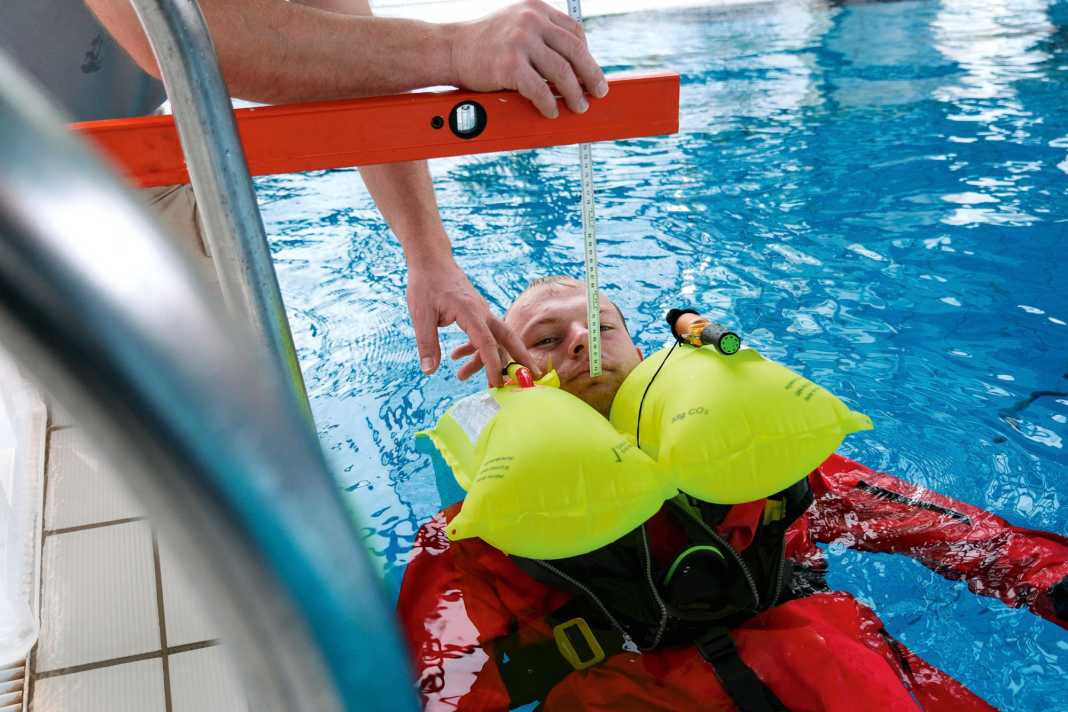


The test is divided into two sections: on land and in the water. In the first part, the workmanship of the harness and wearing comfort were tested, with particular emphasis on ease of adjustment. In addition, plenty of space in the neck plays a decisive role for a comfortable fit. In the second part, our tester always dropped into the water in the same way in the swimming pool. This ensured a repeatable test set-up. This is particularly important for models in the 275 class in order to be able to assess the turning behaviour. Here, the tester must fall into the water on his stomach. Afterwards, the floating position, if available, the position of the spray cap and the freeboard were determined.
In concrete terms, this means that anyone lying on their stomach in the water will not be turned reliably
Breathing freely is only possible in the supine position. According to the standard, waistcoats in the 150 Newton class cannot turn anyone wearing oilskins into a supine position where they cannot pass out. This has also been confirmed by our practical tests. This is why the distinction between these buoyancy classes in the test is crucial. Contrary to the swimwear specified in the ISO standard for testing the 150 Newton waistcoats, we tested with oilskins and sailing shoes.
The test includes 15 models in the 150 and nine in the 275 class. Most manufacturers have several versions in the various buoyancy classes; we have opted for new or current models that we have not yet tested. This is why Secumar's Bolero lifejacket, specially equipped for Compass, is included, but not the Survival 220 model, which won the test in the 150 Newton category in 2019.
As tight as possible, as loose as necessary: types of fastening on the lifejackets tested
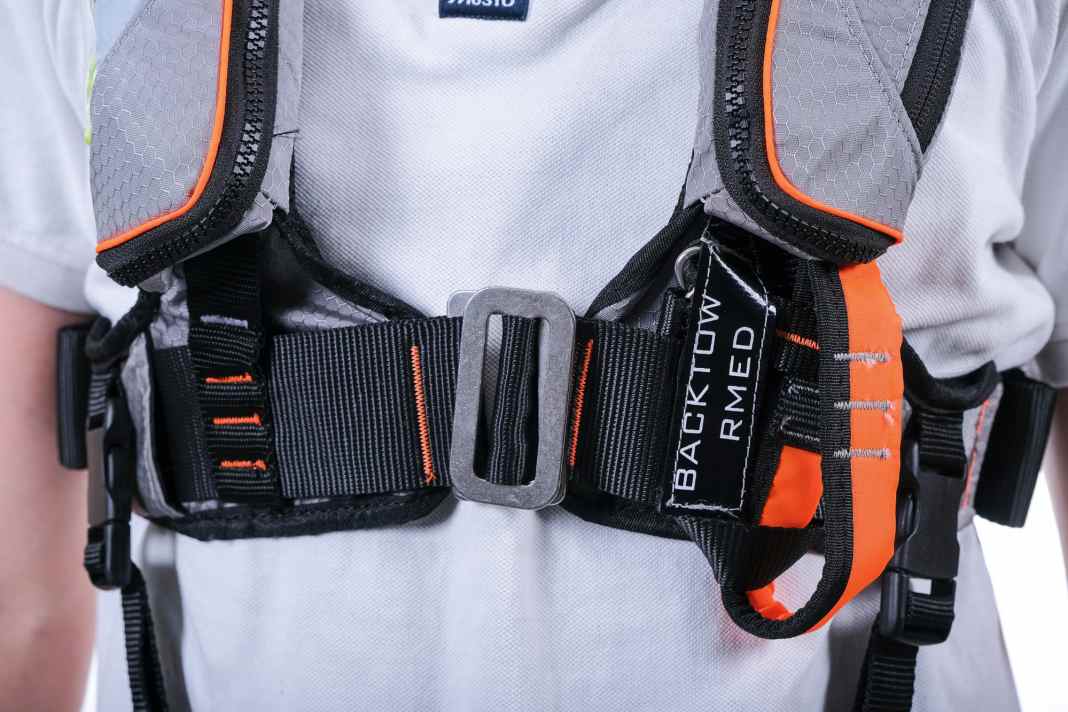



In addition, the own brands of the outfitters Compass, SVB and Decathlon will be at the start. Decathlon has come up with a particularly exciting harness concept with the Tribord LJ180 Air Offshore: The harness and buoyancy compensator can be separated with a zip, allowing only the lightweight harness to be worn comfortably on deck with a safety line for securing.
With Spinlock, Marinepool, Crewsaver and Baltic, other established manufacturers are also represented. The lifejackets from TeamO are brand new and being presented for the first time. The British company has developed the Backtow Harness. By pulling on a strap, the lifebelt's safety catch on the chest can be opened and the harness then attaches to the back of the neck. The idea is that if you are harnessed in, you are not dragged face-first through the water, but in a supine position.
The Deckvest 6D 275N from Spinlock offers a similar system with the Harness Release System (HRS). The entire harness loop of the lifebelt can be released by pulling on a small handle. In an emergency, this should also make it possible to quickly disconnect from the safety system. Apart from these special features, the biggest differences lie in the weight and equipment.
There are 1,052 grams between the lightest and the heaviest lifejacket
The lightest version is the Spinlock Deckvest Lite+ 170N, a model with very reduced features and designed for inland waterways and motorboaters. The same model with the addition Sail offers a spray cap and an emergency light and weighs 142 grams more. The heaviest waistcoat is the Ergofit+ 290 from Crewsaver at just under two kilograms. It comes with high buoyancy, spray cap, emergency light, harness buckle and comfortable harness system.
There are many test candidates between these extremes that are also well equipped. And even if weight is an important factor, the wearing comfort of a heavy waistcoat with a comfortable and easily adjustable harness can also be high. And comfort is crucial in everyday life on board, as it subconsciously determines whether the waistcoat is worn regularly.
Special features of the tested lifejackets
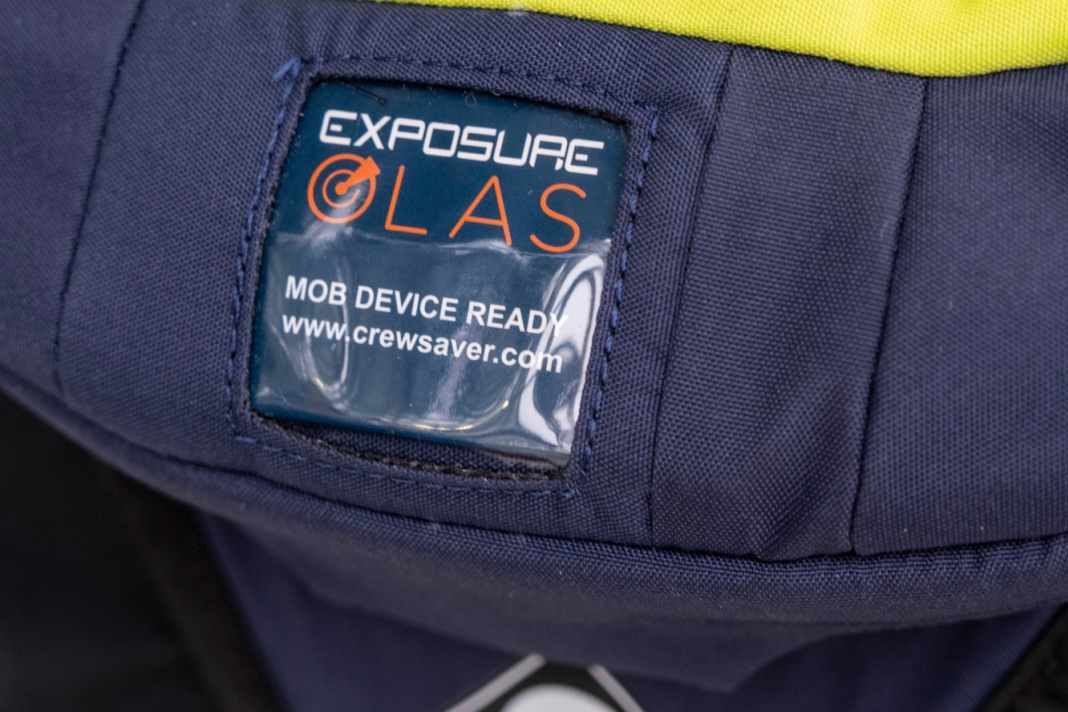



That's why 150cm lifejackets have a right to exist, despite their disadvantage in terms of safety when passing out, because they are often smaller, lighter and more comfortable. And a 150cm waistcoat that is worn all the time is superior to a 275cm waistcoat that is only kept in the locker. For this reason, wearing comfort was awarded 20 points in the test, on a par with function and swimming position.
A well-fitting and easy-to-adjust chest strap and a comfortable fit of the waistcoat on the shoulders and neck are crucial for a high level of comfort. If the rotation of the head is hindered or there is pressure on the neck, this can be extremely annoying in the long term. In the 150-class lifejackets, the Deckvest 6D 170N, Crewfit+ 180N, Athena 165 and LJ180N Air Offshore proved to be particularly comfortable. The models with more buoyancy were the Ergofit+ 290 (despite its high weight), the Legend 305 and the Bolero 275. However, in addition to wearing comfort in everyday sailing, performance in an emergency is of course crucial. This is where the assessment of function and floating position shows how well the buoyancy compensator sits when inflated. It is crucial that it does not ride up (the adjustment of the harness is also important here) and that the two ends of the buoyancy chamber are flush with the chest. If a wave channel remains here, this will make breathing difficult or impossible.
Breathe in well protected: spray caps for the models
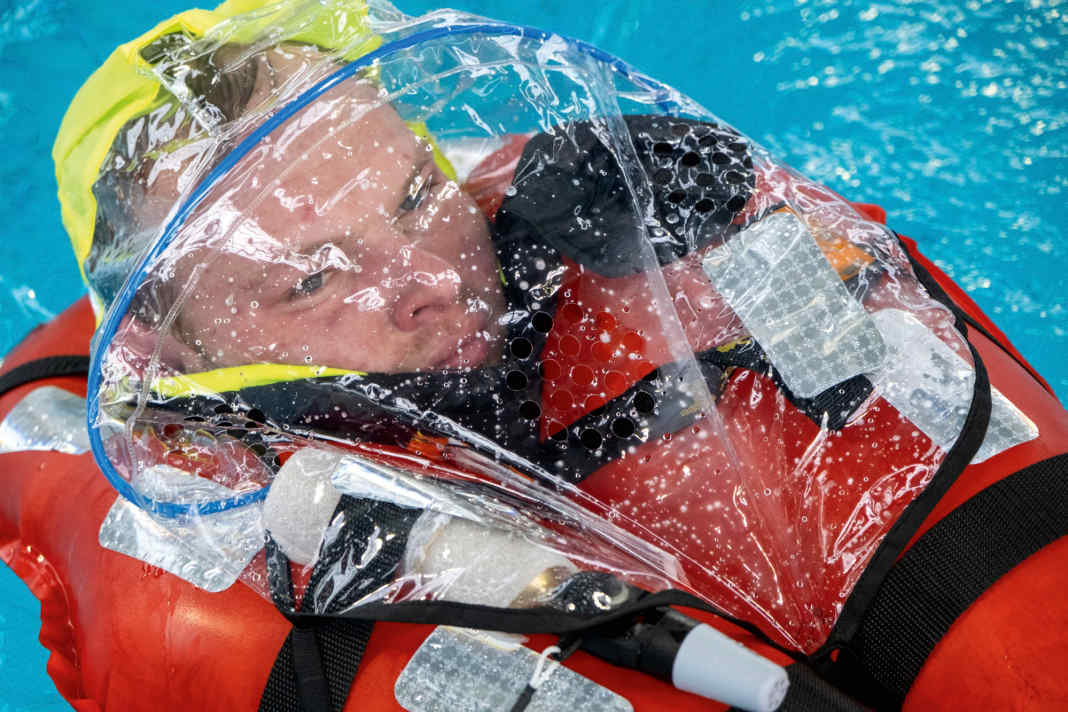



Because water will slosh up to your mouth. This is where the spray cap can help. However, it must be put on independently and will not help in the event of fainting. The lifejacket should lift the head out of the water as far as possible due to a good fit and swimming position. The resulting distance between the mouth and the surface of the water is the freeboard. The more of it, the better. That is why up to 20 out of a total of 100 points were awarded for this.
The crucial question is: Which waistcoat turns the person into a faint-proof position?
Of nine offshore waistcoats with at least 275 newtons of buoyancy, eight managed this. Only the TeamO model failed in this important discipline. In the 150-class lifejackets, even the Tribord LJ180N Air Offshore was able to achieve this due to the asymmetrical buoyancy body that protrudes very far forward from the chest. Nevertheless, you cannot rely on this 100 per cent. This waistcoat also has no spraycap, which is essential for an offshore lifejacket. The test winner was the Crewsaver Crewfit+ 180N Pro for the 150s and the Baltic Legend 305 for the 275s. The decisive factors were good to very good results for wearing comfort, function and buoyancy as well as freeboard. For the 275 Newton models, the equipment with spray cap and emergency light was also decisive. Nevertheless, there are other candidates in the test that also achieved good ratings. In addition to the test winners, this leaves a good selection, whereby individual preferences in terms of wearing comfort will also be taken into account. For example, the Athena 165 model from Baltic is specially optimised for the anatomy of women and also scored well in the test.
Heads up: differences in the buoyancy bodies
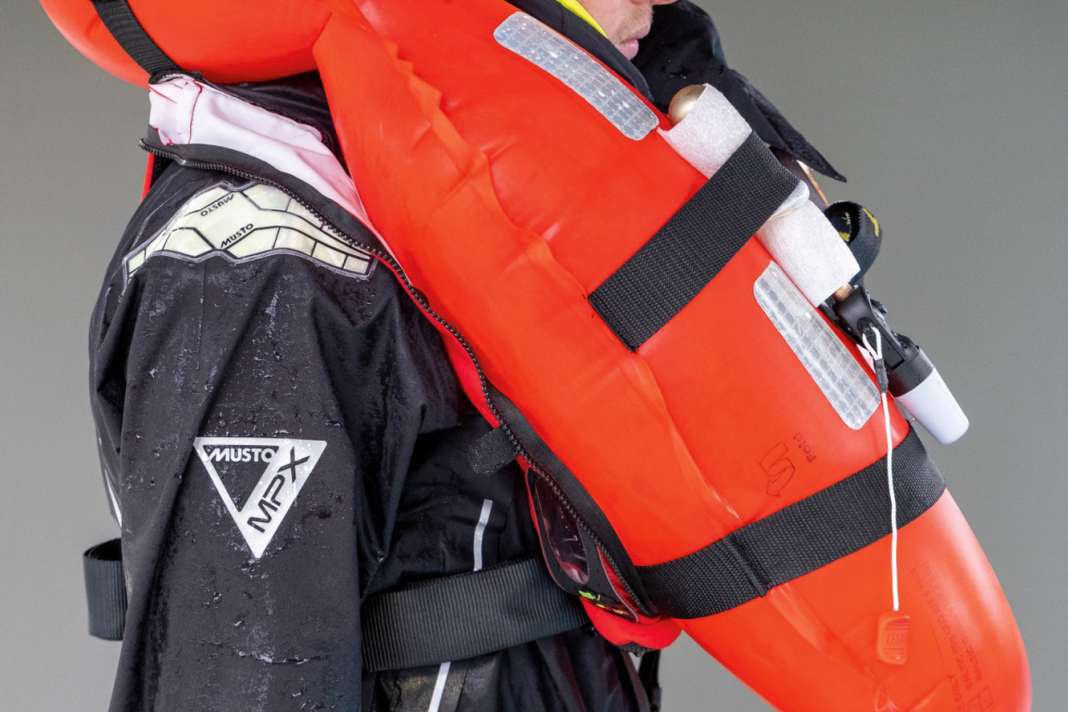



The test candidates vary greatly in price, ranging from 75 to 469 euros. The models from Marinepool are convincing in terms of price and performance. Both the 180N Racer and the 300N Pro 3D are recommended from this point of view.
Out of 24 models in the test, 14 lifejackets scored 65 points or more. A good result. It is advisable to try them on yourself at the outfitter, test the adjustment and then make a decision. The better the waistcoat fits, the more often it will be worn. And then the crew is optimally equipped.
The detailed test results:
All content in this security special:
- Sea survival training for emergencies
- Stretch ropes: The correct handling of lifelines
- Lifejackets: 24 automatic lifejackets in a large comparison test (150N & 275N)
- Emergency transmitters - alerting, searching and finding, a system overview
- You should master these MOB manoeuvres!
- Back on board with tricks and professional recovery aids
- Safety check: Inspection saves lives
- Prepared for an emergency: 6 checklists for 6 scenarios

